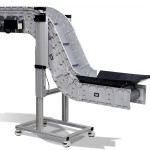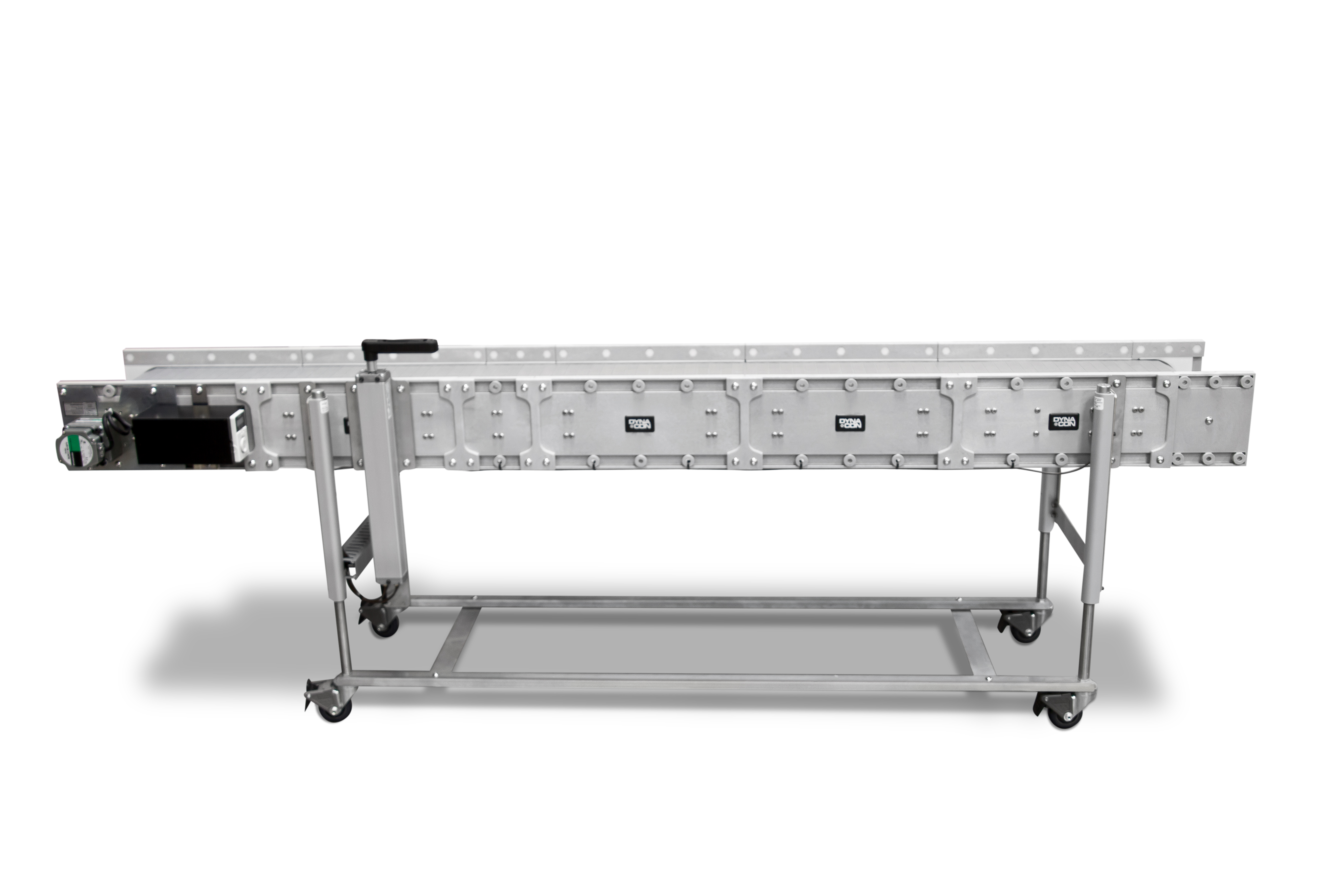First of all, let’s define what an ergonomic conveyor is… ergonomic conveyors are designed to interact most efficiently and safely with the people who use them. Below are a couple of scenarios of when you might want to consider using an ergonomic conveyor.
Ergonomic Conveyor: When a conveyor has to change the infeed or discharge height often
Changing the height of a conveyor is typically a multi-person event depending on the size and weight of the conveyor. Naturally, there is lifting, bending and squatting involved with changing conveyor height(s). Some companies have the production personnel tackle this task while others only let set-up and/or maintenance personnel adjust the conveyor height. More times than not, the height of the conveyor isn’t changed to the correct height because no one wants to do it. This can lead to manufactured parts sometimes dropping too far before landing on the infeed end of the conveyor. The same problem exists on the drive end of the conveyor where the parts exit the conveyor. In both cases, excessive drop heights can lead to part damage/lost production. An ergonomic conveyor that can change height, nearly effortlessly, by a single operator can solve this problem.
Assembly Workstation Conveyors
It is common for multiple conveyors to be integrated into manufacturing assembly cells. The conveyors initially bring raw parts to operators so sub-assemblies can be created. The sub-assemblies are returned to a conveyor to go further downstream for even more assembly. This process repeats until the product build is complete. Manufacturing engineers with old school thinking, that design the work cells, pick a conveyor height that works for the majority of the assembly line workers. Common sense tells us that there is going to be workers that won’t be comfortable working at the non-adjustable, predetermined conveyor height. Tall workers will constantly be bending over, while shorter workers will work with their hands uncomfortably high to complete their work. Additionally, the assembly workers of average height will be working at a height that is comfortable, but not optimal. Companies that value the well-being of their workforce invest in tools, equipment, and yes, conveyors that make the assembly cells as ergonomic as possible. Conveyors that can change height at the beginning of a shift with the turn of a crank, or a push of a button, to get to the optimal height have many benefits! Increased production, less fatigue, increased morale, lower employee turn-over, and decreased lost time injuries.
Ergonomic Lift Operation, Specifications and Accessories
The maximum change in height for an ergonomic conveyor is 15.5”. The lifting or lowering of the conveyor is accomplished with a hydraulic pump that expands or contracts the attached cylinders. The pump operates manually or can be motor driven. For conveyors that need occasional height changes, a manual hand crank that the operator turns to raise or lower the conveyor makes the most sense. For conveyors that need daily height changes a small electric motor replaces the hand crank to automate this process. With a simple push of a button the conveyor can be positioned to the optimal working height. Optional accessories for the motorized lift include a Foot Switch, an IR Remote Control Switch (similar to a TV remote), or a Display Switch that gives an LED readout of the conveyor height, and has four memory presets. Watch the video to see for yourself.
Subscribe to our E-News and stay informed!
- Celebrating Freedom, Teamwork, and a Month of Success - July 7, 2025
- Mechanical_Design Engineer - June 18, 2025
- Driving the Future of Manufacturing: Dynamic Conveyor at the Beyond Boundaries Automation Event - June 17, 2025



